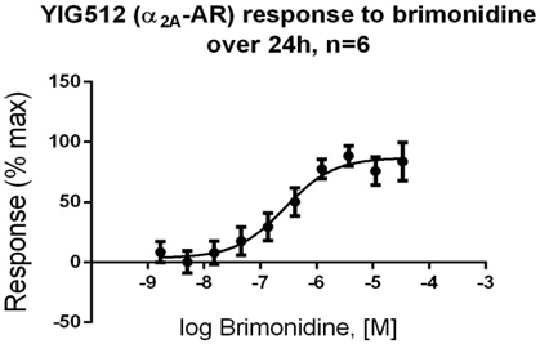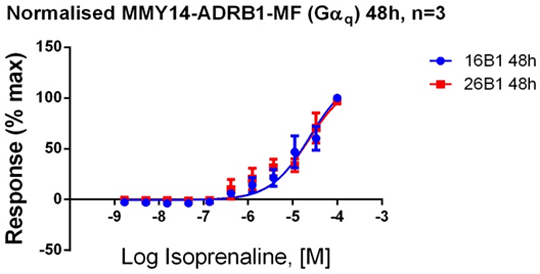Engineering Yeast for G Protein-Coupled Receptor Functional Studies
G protein-coupled receptors (GPCRs) are membrane proteins responsible for a myriad of physiological functions. It is not surprising, therefore, that over half of drugs on the market target GPCRs. Consequently, there has been a great emphasis on developing GPCR assays to develop future drugs. One such cell-based assay was developed at GlaxoSmithKline (GSK) by Dowell and Brown in 2002. This assay uses a cheap, rapidly growing unicellular organism – baker’s yeast. In this organism the pheromone signalling pathway is the only GPCR-activated pathway. Yeast engineering done at GSK produced MMY strains lacking the native yeast Ste2p GPCR and other key proteins, together with the integration of chimeric yeast/mammalian G protein alpha subunits thereby allowing constitutive expression of mammalian GPCRs (1). The limitation of the assay is that some pharmacologically-important receptors cannot be tested using the current MMY strains and protocols. The aim of this project, therefore, is to understand why and to carry out strain engineering to enable the functional testing of these receptors. We have optimised the assay parameters using well coupling α2A-AR (shown in Fig 1) and α2B-AR receptor integrated strains. The well characterised adrenoceptors β1 and β2 were then taken as an example of poorly coupling receptors in this system. We have tested several expression vector designs with different leader sequences and protein tags for localisation studies. 288 yeast colonies were screened expressing either β1-AR or β2-AR. Of those, 17 were selected as potentially demonstrating functional coupling with the receptor. However, yeast that contained β2-ARepisomal vector failed to reproduce the initial results after a freeze-thaw cycle; while β1-AR expressingcolonies retained the coupling in GαS, Gαq (shown in Fig 2),Gα14and Gpa1 (yeast Gα) strains. The mean pEC50 values (SEM in brackets) were as follows: GαS – 4.43 (±0.19), Gαq – 4.74 (±0.10), Gα14– 5.16 (±0.26), Gpa1 – 4.59 (±0.28). Our preliminary results will inform further MMY strain engineering and contribute to troubleshooting recombinant protein expression for other pharmacological and structural studies.
Fig1. α2A-AR response to brimonidine stimulation in Gαq strain. pEC50=6.56 ±0.2 n=6
Fig2. β1-AR response to isoprenaline stimulation in Gαq strain. pEC50=4.63 (16B1) and 4.65 (26B1), ±0.11 and 0.07. n=3
Reference: 1. Brown AJ et al (2000) Yeast, 16: 11-22.
|





